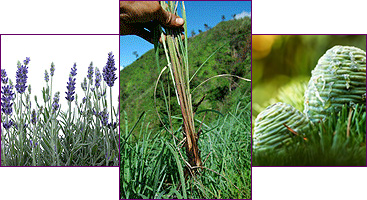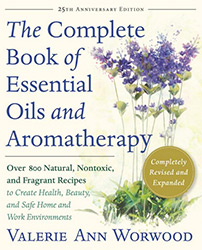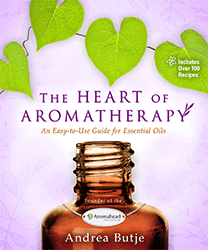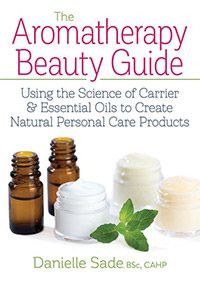Aromatherapy Insect Repellent Recipe

The essential oils distilled from natural botanicals like citronella can potentially help to deter insects.
I love spending time outdoors, especially in the warmer months, but mosquitoes and other flying/biting insects can ruin the best of outdoor occasions. Synthetic insect repellents are known to cause irritation and sensitivity in some people, are considered toxic and can be potentially harmful to the environment.
This more natural insect repellent recipe only requires a few reasonably priced essential oils and other ingredients, has a pleasant aroma, and can be helpful in deterring insects. Your particular usage and body chemistry can affect your results. Therefore, there's no guarantee that you still won't get bit.
Ingredients
- 4 oz. clean spray bottle with a fine mist setting (do not use a bottle that previously contained cleaning products or hair products such as hair spray).
- 1.5 fl. ounces of distilled water and 1.5 fl. ounces of high-proof alcohol (vodka is suitable, isopropyl or rubbing alcohol is not). Alternatively, you may omit the alcohol and increase the amount of distilled water to 3 fl. ounces.
- Solubilizer such as Polysorbate 20 or Solubol. (For the solubilizer that you choose, follow the usage guidelines provided by your vendor.)
- 10 drops Citronella Essential Oil
- 10 drops Atlas Cedarwood Essential Oil
- 5 drops Lavender Essential Oil
- 5 drops Palmarosa Essential Oil
- 5 drops Kunzea Essential Oil
References: Salvatore Battaglia, The Complete Guide to Aromatherapy Third Edition Volume 1 - Foundations & Materia Medica (Brisbane Australia: Black Pepper Creative, 2018), 211, 241, 358, 458. Neryls Purchon and Lora Cantele, Complete Aromatherapy & Essential Oils Handbook for Everyday Wellness (Toronto ON: Robert Rose, 2014), 254. Julia Lawless, The Encyclopedia of Essential Oils (Updated Edition) (London: Harper Thorsons, 2014), 122. Andrea Butje, The Heart of Aromatherapy (Carlsbad, CA: Hay House, Inc., 2017), 43, 69.
Everyone and every situation is different. Although this recipe has worked well for me, there is no guarantee that this recipe will prevent you or other users from being bitten by insects. This recipe hasn't been scientifically tested for effectiveness and is probably not as effective as DEET. You assume all responsibility and risk for trying or modifying this recipe and seeing if it works for your particular needs.
Directions
- Fill the spray bottle with the choice of either 1.5 fl. ounces of distilled water and 1.5 fl. ounces of alcohol or 3 fl. ounces of distilled water. (Even though a 4 oz. bottle is suggested, leave about 1 oz. unfilled so you can shake the bottle well between uses.)
- Combine the essential oils and solubilizer, following your supplier's instructions and then add to the spray bottle.
- Screw on the sprayer top and then shake well.
To Use
Shake the bottle before each use. Essential oils do not fully dissolve in water and alcohol, so be sure that you use a solubilizer.
Mist onto your skin and clothing and reapply as necessary. Discontinue use if you feel sensitivity from the repellent. Be careful not to mist delicate fabrics or surrounding furniture that may be harmed by the ingredients in the repellent. Be especially careful not to allow the mist fall into open beverages.
General Safety Information
These recipes are offered for educational purposes only. Before using any essential oil, carefully read AromaWeb's Essential Oil Safety Information page. For in-depth information on oil safety issues, read Essential Oil Safety by Robert Tisserand and Rodney Young. Do not take any oils internally and do not apply undiluted essential oils, absolutes, CO2s or other concentrated essences onto the skin without advanced essential oil knowledge or consultation from a qualified aromatherapy practitioner. For general dilution information, read AromaWeb's Guide to Diluting Essential Oils. If you are pregnant, epileptic, have liver damage, have cancer, or have any other medical problem, use oils only under the proper guidance of a qualified aromatherapy practitioner. Use extreme caution when using oils with children and consult a qualified aromatherapy practitioner before using oils with children, the elderly, if you have medical issues or are taking medications.
Do You Need the Ingredients Listed in This Recipe?
You can find the essential oils, other ingredients and packaging that you need by patronizing the fine companies that support AromaWeb with their banner advertising located throughout AromaWeb (See them all at a glance within the Advertiser Spotlight area) and the listings located within the Aromatherapy Business Directory. Many of AromaWeb's advertisers also expertly formulate their own ready-made products if you decide you'd rather not make aromatherapy products yourself.
Do You Want More Essential Oil Recipes and Blends?

Over 800 Recipes!
The Complete Book Of Essential Oils & Aromatherapy
Author: Valerie Ann Worwood

Over 100 Recipes!
The Heart of Aromatherapy
Author: Andrea Butje

100 Recipes!
The Aromatherapy Beauty Guide
Using the Science of Carrier & Essential Oils to Create Natural Personal Care Products
Author: Danielle Sade, BSc, CAHP
Visit AromaWeb's Books area to find details about many other essential oil and aromatherapy books.